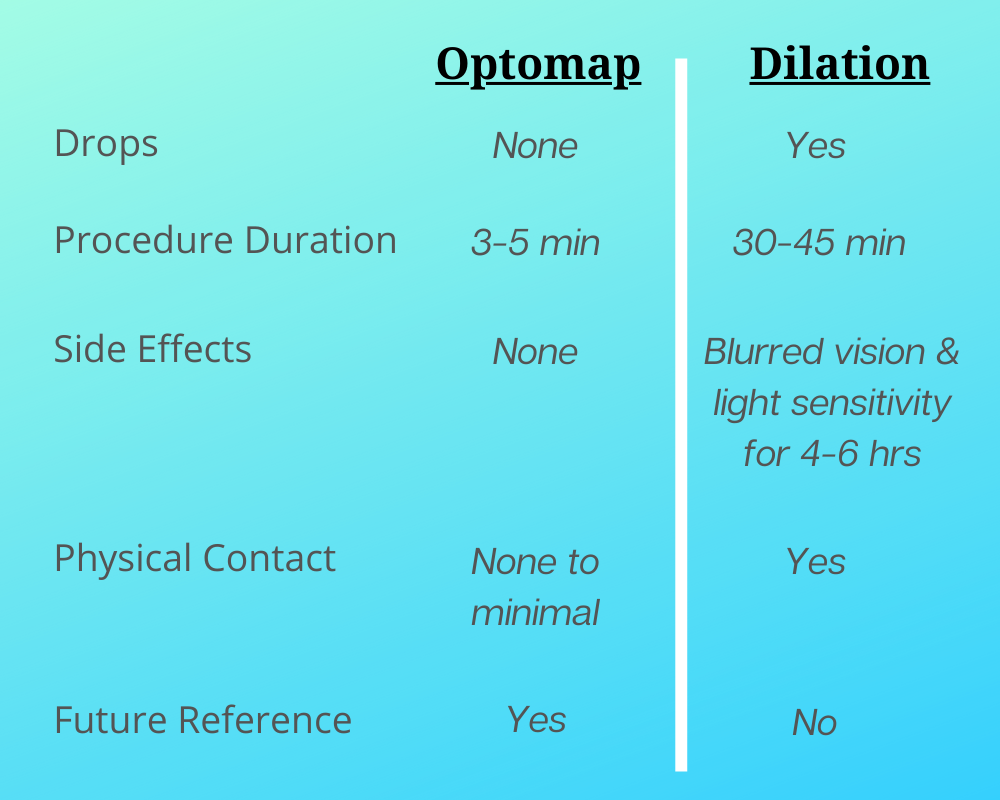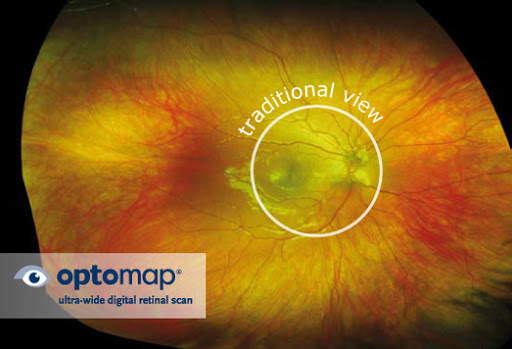The Optomap Retinal Exam
Worried about an eye exam ruining the rest of your day from the dilation drops? There’s a better option.

The Optomap Retinal Exam allows the doctor to see more than 80% of your retina with a high-resolution image – without dilation – in a few seconds. The technology allows doctors to view different layers of your retina to better diagnose abnormal findings. It’s easy to do, more detailed than dilation, and is immediately available for review with you in the exam room. Additionally, your retinal scan can be used as future reference to accurately monitor small changes inside your eye.
 Dilation, the traditional method, requires eye drops that enlarge the pupil area causing light sensitivity and blurred vision for approximately 4 to 6 hours. The drops require 30 minutes to take effect and then another 5 to 15 minutes of evaluation with a bright light source. During evaluation, multiple views of each eye are needed and findings are documented in your chart using words.
Dilation, the traditional method, requires eye drops that enlarge the pupil area causing light sensitivity and blurred vision for approximately 4 to 6 hours. The drops require 30 minutes to take effect and then another 5 to 15 minutes of evaluation with a bright light source. During evaluation, multiple views of each eye are needed and findings are documented in your chart using words.